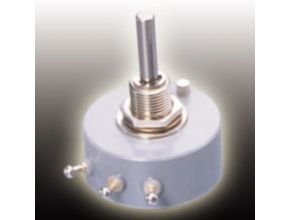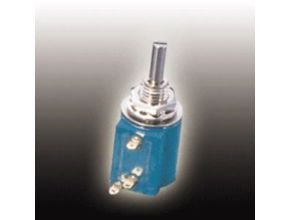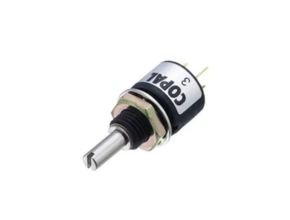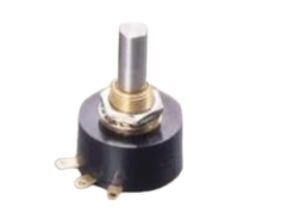Description Of Nidec Copal JP-30 Single-turn Cement Potentiometer Potentiometers are displacement sensors that produce electrical output (voltage) in proportion to the mechanical displacement. They are basically composed of a resistor and a wiper (brush), with the mechanical displacement of the resistor relative to the wiper being accurately converted into an electrical voltage output. A voltage […]
Nidec Copal M Series Multi-turn Wirewound Potentiometer Potentiometers are displacement sensors that produce electrical output (voltage) in proportion to the mechanical displacement. They are basically composed of a resistor and a wiper (brush), with the mechanical displacement of the resistor relative to the wiper being accurately converted into electrical voltage output. A voltage is applied […]
Description of Nidec Copal JC10 Single-turn Conductive Plastic Potentiometer The JC10 potentiometer from Nidec Copal is a shift sensor that converts mechanical movement into an electrical signal in the form of an output voltage. Its operation is based on the working principle of a variable resistor, where the relative movement between the resistor and the […]
Description of Nidec Copal JC22E/JC22S Single-turn Conductive Plastic Potentiometer Nidec Copal JC22E/JC22S potentiometers are essentially displacement sensors. They operate by converting mechanical movement into an electrical signal (voltage). This is achieved through a simple mechanism: a resistor and a moving contact (wiper). As the resistor moves relative to the wiper, the resulting voltage output precisely […]
Description Nidec Copal JC30S/JC40S potentiometers are essentially displacement sensors. They work by converting mechanical movement into an electrical signal (voltage). This happens through a simple mechanism: a resistor and a moving contact (wiper). As the resistor moves relative to the wiper, the resulting voltage output precisely reflects the amount of movement. Wirewound Type Precision wire […]





